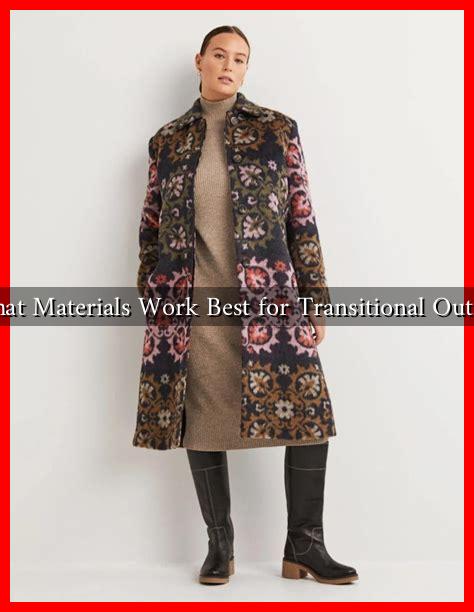-
Table of Contents
What Materials Work Best for Transitional Outfits
As the seasons change, so do our wardrobes. Transitional outfits are essential for navigating the fluctuating temperatures of spring and fall. Choosing the right materials can make all the difference in comfort, style, and versatility. In this article, we will explore the best materials for creating effective transitional outfits, providing insights into their benefits and how to incorporate them into your wardrobe.
Understanding Transitional Outfits
Transitional outfits are designed to bridge the gap between seasons. They should be adaptable, allowing for layering and easy adjustments as temperatures fluctuate throughout the day. The key to a successful transitional outfit lies in selecting materials that offer both comfort and style.
Key Materials for Transitional Outfits
When it comes to choosing materials for transitional outfits, several options stand out due to their versatility and comfort. Here are some of the best materials to consider:
- Cotton: A breathable and lightweight fabric, cotton is perfect for layering. It can be worn alone in warmer weather or layered under sweaters and jackets as temperatures drop.
- Wool: Known for its insulating properties, wool is ideal for cooler days. Merino wool, in particular, is soft and lightweight, making it suitable for layering without adding bulk.
- Denim: A classic choice, denim is durable and versatile. Denim jackets and jeans can be paired with various tops and shoes, making them a staple in transitional wardrobes.
- Silk: This luxurious fabric adds elegance to any outfit. Silk blouses can be layered under cardigans or worn alone, providing a chic option for both warm and cool days.
- Knits: Sweaters and cardigans made from knit fabrics are perfect for layering. They provide warmth without being overly heavy, making them ideal for transitional weather.
Layering Techniques for Transitional Outfits
Layering is a crucial technique for creating effective transitional outfits. Here are some tips on how to layer materials effectively:
- Start with a Base Layer: Choose a lightweight cotton or silk top as your base layer. This will keep you comfortable and allow for easy layering.
- Add a Mid-Layer: Incorporate a knit sweater or a lightweight wool cardigan. This layer provides warmth and can be easily removed if the temperature rises.
- Finish with an Outer Layer: A denim jacket or a trench coat can serve as your outer layer. These pieces not only add style but also protect against wind and light rain.
Case Studies: Successful Transitional Outfits
To illustrate the effectiveness of these materials and layering techniques, let’s look at a couple of case studies:
- Case Study 1: The Urban Professional – A young professional in a city environment opts for a silk blouse paired with a lightweight wool blazer and tailored denim jeans. This outfit transitions seamlessly from a morning meeting to an evening out, showcasing the versatility of the chosen materials.
- Case Study 2: The Weekend Explorer – A weekend adventurer layers a cotton t-shirt under a knit sweater, topped with a denim jacket. This outfit is perfect for a day of exploring local markets or hiking, demonstrating the practicality of layering for varying temperatures.
Statistics on Seasonal Wardrobe Choices
According to a survey conducted by the Fashion Institute of Technology, 65% of consumers reported that they prefer versatile clothing that can be worn across multiple seasons. This statistic highlights the growing demand for transitional outfits that cater to changing weather conditions.
Conclusion
Choosing the right materials for transitional outfits is essential for comfort, style, and versatility. Cotton, wool, denim, silk, and knits are all excellent choices that can be layered effectively to adapt to fluctuating temperatures. By understanding how to layer these materials, you can create outfits that not only look great but also keep you comfortable throughout the day. As you curate your wardrobe for the changing seasons, remember the importance of versatility and adaptability in your clothing choices.
For more tips on building a versatile wardrobe, check out resources like Fashionista.

